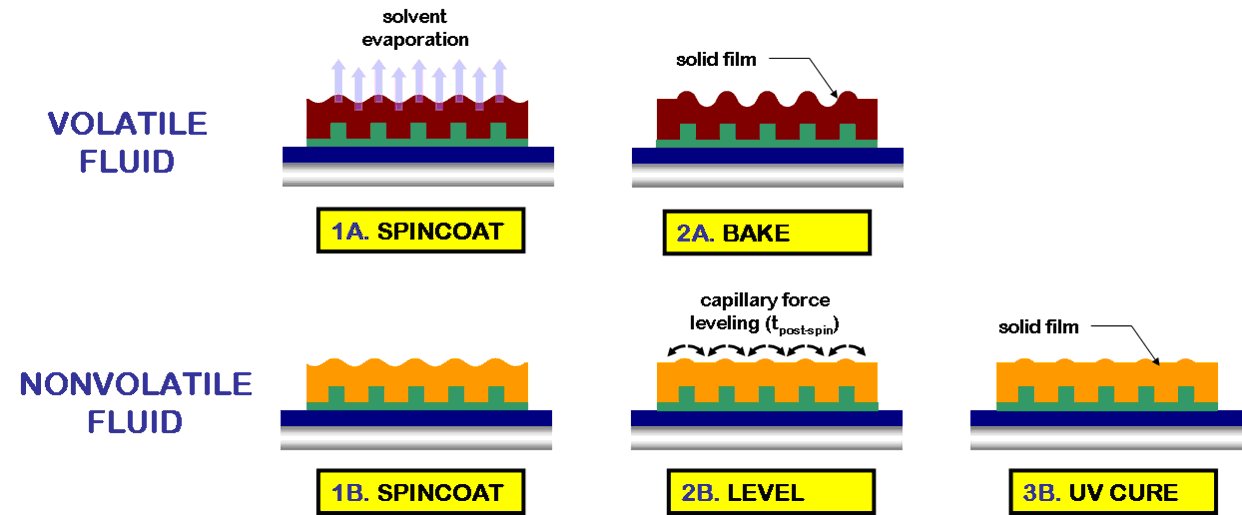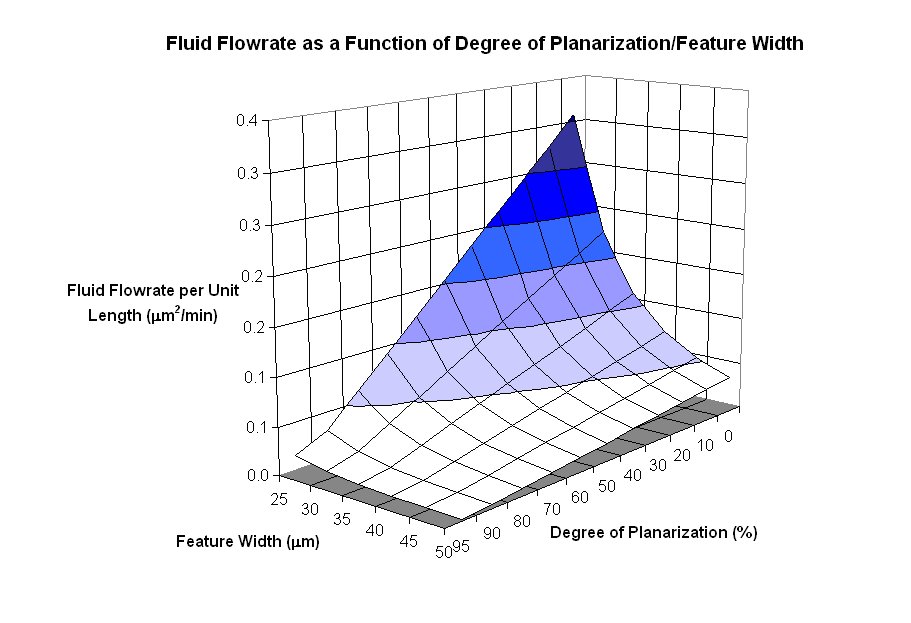Planarization Theory
Spincoating: Nonvolatile vs. Volatile Fluids
The industry has many decades of experience with coating volatile materials – high molecular weight polymers dissolved in solvent – as planarizing materials; however, this usually leads to conformal or semi-conformal films due to the evaporation of solvent. Nonvolatile materials are more suitable as planarizing topcoats because the film planarity is not degraded from solvent evaporation during the spincoating process and the materials continue to planarize by flowing after the spincoating process.

Figure 3. Coating process for volatile and non-volatile fluids.
Mechanics of Nonvolatile Fluid Leveling
Basic fluid mechanics and surface phenomena principles were used to analyze nonvolatile fluid leveling.
Figure 4. Analysis of a nonvolatile fluid leveling a trench

Figure 5. Fluid flowrate as a function of DOP/feature width.
Figure 5 shows that the flowrate decreases as the trench width increases. This makes sense, since the capillary driving force is inversely proportional to w3; moderate changes to the width impact the flowrate dramatically. The more important result is that the flowrate decreases as the DOP increases. This means it will be very difficult to obtain a completely planar film, simply relying on capillary pressure contributions.
Critical Degree of Planarization
Relying on capillary force to achieve a completely flat film is a time consuming, if not impossible, task. Fortunately for most etch processes, only a specific DOP needs to be achieved in order to successfully transfer the pattern into the substrate. In order to define DOPcrit , some simplified cases of the reactive ion etching (RIE) process and film shrinkage were analyzed. The resulting equations shown below allow us to calculate the critical DOP for both isolated trench and line patterns.
 | (1) |
 | (2) |
Here, ε is the fractional shrinkage of the topcoat from UV polymerization and η is a constant greater than or equal to 1 that accounts for overetch. This analysis, however, does not give any information about the corresponding critical leveling time. This factor must be solved numerically through simulation.
Continue reading >> Simulation